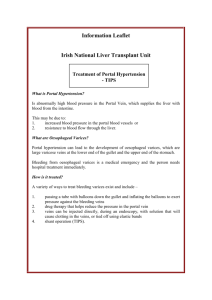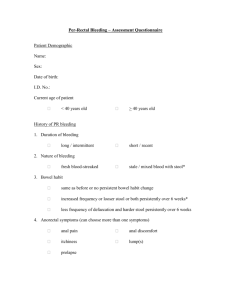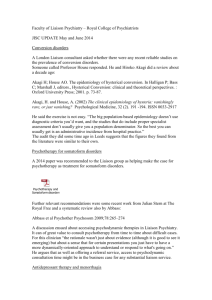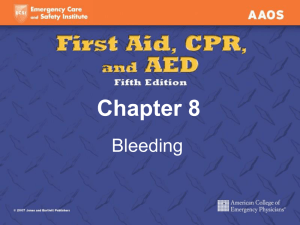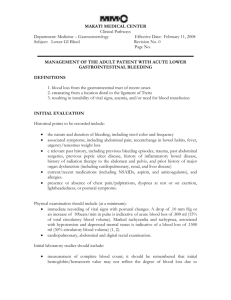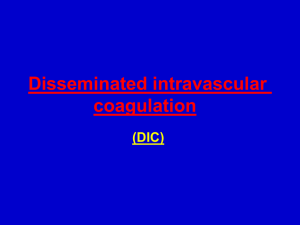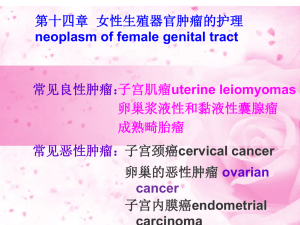Variceal Bleeding in Patients with Budd-Chiari Syndrome: a
advertisement
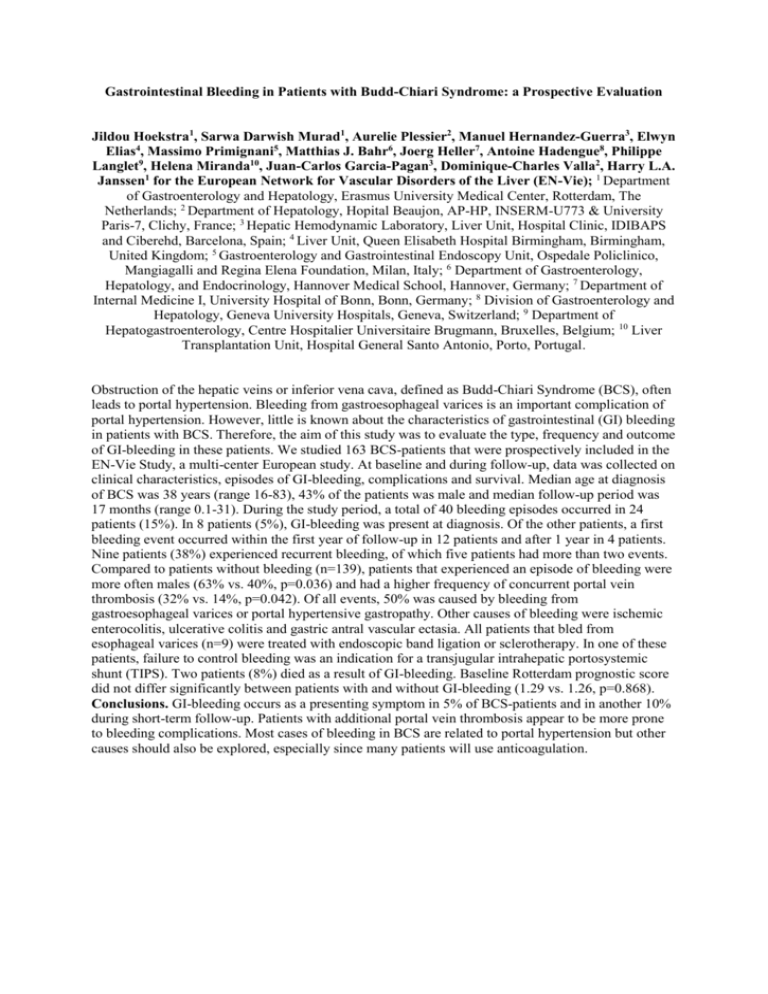
Gastrointestinal Bleeding in Patients with Budd-Chiari Syndrome: a Prospective Evaluation Jildou Hoekstra1, Sarwa Darwish Murad1, Aurelie Plessier2, Manuel Hernandez-Guerra3, Elwyn Elias4, Massimo Primignani5, Matthias J. Bahr6, Joerg Heller7, Antoine Hadengue8, Philippe Langlet9, Helena Miranda10, Juan-Carlos Garcia-Pagan3, Dominique-Charles Valla2, Harry L.A. Janssen1 for the European Network for Vascular Disorders of the Liver (EN-Vie); 1 Department of Gastroenterology and Hepatology, Erasmus University Medical Center, Rotterdam, The Netherlands; 2 Department of Hepatology, Hopital Beaujon, AP-HP, INSERM-U773 & University Paris-7, Clichy, France; 3 Hepatic Hemodynamic Laboratory, Liver Unit, Hospital Clinic, IDIBAPS and Ciberehd, Barcelona, Spain; 4 Liver Unit, Queen Elisabeth Hospital Birmingham, Birmingham, United Kingdom; 5 Gastroenterology and Gastrointestinal Endoscopy Unit, Ospedale Policlinico, Mangiagalli and Regina Elena Foundation, Milan, Italy; 6 Department of Gastroenterology, Hepatology, and Endocrinology, Hannover Medical School, Hannover, Germany; 7 Department of Internal Medicine I, University Hospital of Bonn, Bonn, Germany; 8 Division of Gastroenterology and Hepatology, Geneva University Hospitals, Geneva, Switzerland; 9 Department of Hepatogastroenterology, Centre Hospitalier Universitaire Brugmann, Bruxelles, Belgium; 10 Liver Transplantation Unit, Hospital General Santo Antonio, Porto, Portugal. Obstruction of the hepatic veins or inferior vena cava, defined as Budd-Chiari Syndrome (BCS), often leads to portal hypertension. Bleeding from gastroesophageal varices is an important complication of portal hypertension. However, little is known about the characteristics of gastrointestinal (GI) bleeding in patients with BCS. Therefore, the aim of this study was to evaluate the type, frequency and outcome of GI-bleeding in these patients. We studied 163 BCS-patients that were prospectively included in the EN-Vie Study, a multi-center European study. At baseline and during follow-up, data was collected on clinical characteristics, episodes of GI-bleeding, complications and survival. Median age at diagnosis of BCS was 38 years (range 16-83), 43% of the patients was male and median follow-up period was 17 months (range 0.1-31). During the study period, a total of 40 bleeding episodes occurred in 24 patients (15%). In 8 patients (5%), GI-bleeding was present at diagnosis. Of the other patients, a first bleeding event occurred within the first year of follow-up in 12 patients and after 1 year in 4 patients. Nine patients (38%) experienced recurrent bleeding, of which five patients had more than two events. Compared to patients without bleeding (n=139), patients that experienced an episode of bleeding were more often males (63% vs. 40%, p=0.036) and had a higher frequency of concurrent portal vein thrombosis (32% vs. 14%, p=0.042). Of all events, 50% was caused by bleeding from gastroesophageal varices or portal hypertensive gastropathy. Other causes of bleeding were ischemic enterocolitis, ulcerative colitis and gastric antral vascular ectasia. All patients that bled from esophageal varices (n=9) were treated with endoscopic band ligation or sclerotherapy. In one of these patients, failure to control bleeding was an indication for a transjugular intrahepatic portosystemic shunt (TIPS). Two patients (8%) died as a result of GI-bleeding. Baseline Rotterdam prognostic score did not differ significantly between patients with and without GI-bleeding (1.29 vs. 1.26, p=0.868). Conclusions. GI-bleeding occurs as a presenting symptom in 5% of BCS-patients and in another 10% during short-term follow-up. Patients with additional portal vein thrombosis appear to be more prone to bleeding complications. Most cases of bleeding in BCS are related to portal hypertension but other causes should also be explored, especially since many patients will use anticoagulation.





